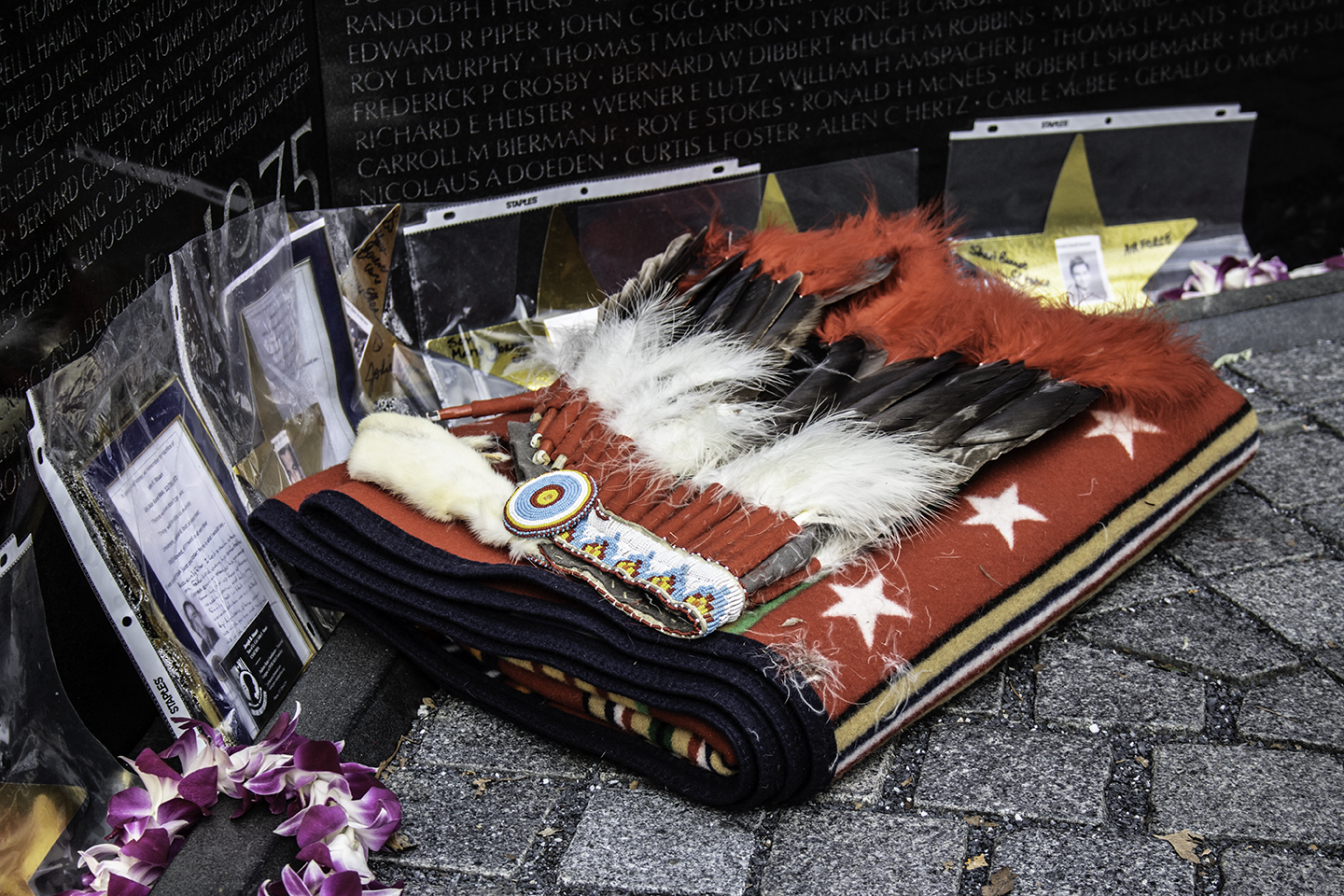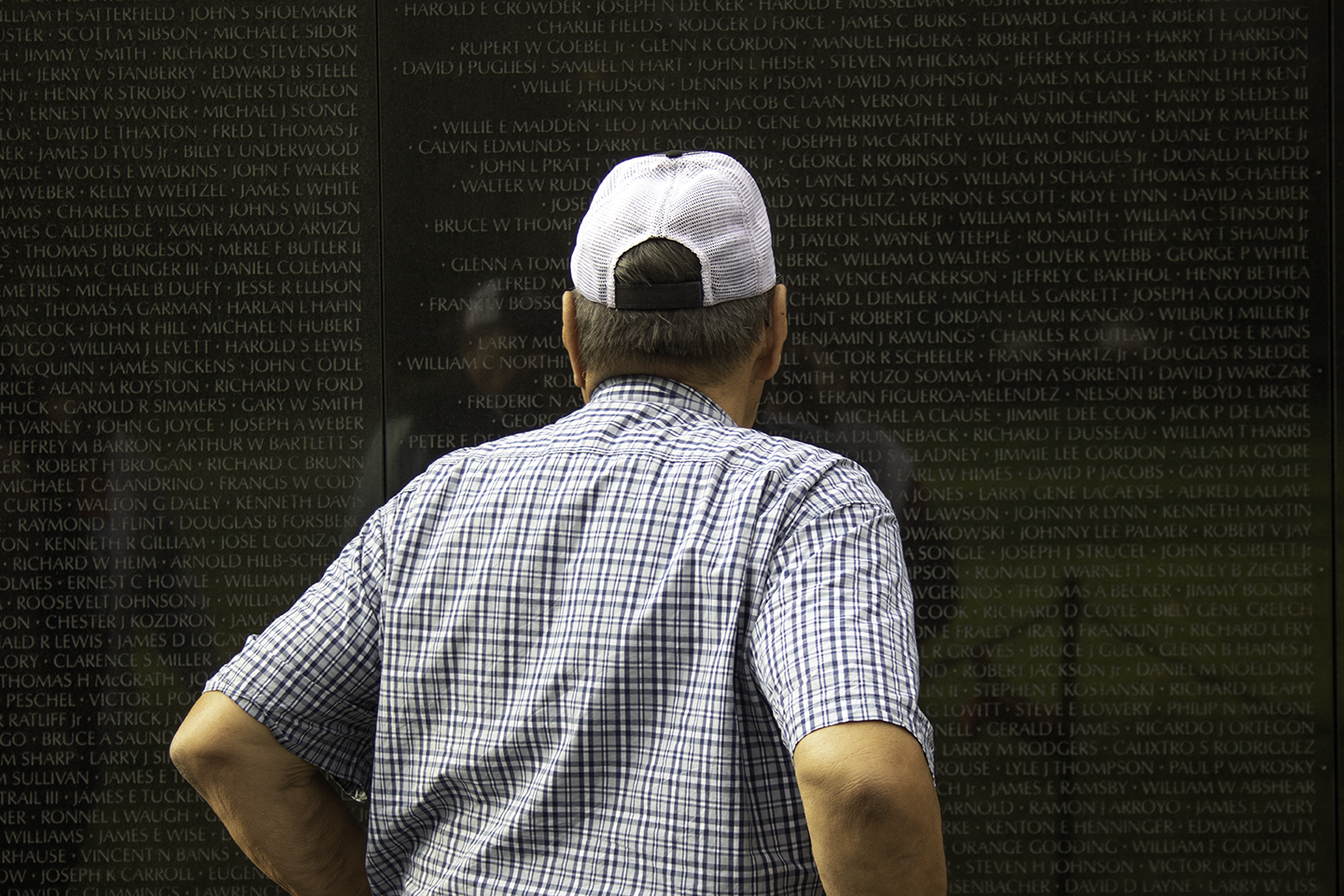[This article was written by Osage Nation Communications Coordinator Dena Cosby. Cosby is an Army National Guard veteran who proudly served in Hurricane Katrina as Rescue and Support.]
The Osage Nation Veterans Memorial Commission (ONVMC) traveled to Washington, D.C. for the November 11th National Native American Veterans Memorial (NNAVM) dedication that was held at the Smithsonian National Museum of the American Indian (NMAI). Osage Nation (ON) members participated in a procession that honored American Indian, Alaska Native, and Native Hawaiian veterans and families.
A total of eleven veterans loaded a traveling bus on November 9, 2022, at the ON Civic Center. Veterans and their family members traveled from Pawhuska, Oklahoma from to Cuba, Missouri where they stopped to view the Rural Tourism Initiative that commemorates the Osage Trail of 1871 on Historic Route 66 at the intersection of I-44 and Highway 19. The ONVMC was greeted by Dennis Rodemeir, who is the President of the Cuba Development Group. Rodemeir and ON Senior Advisor to the Principal Chief Johnny Williams shook hands and discussed the trip to Washington, D.C. while viewing the 35-foot tall, 20-foot wide, and 80-foot long monument constructed through the initiative to recognize Osage people.
The bus then traveled to Silver Springs, Maryland arriving at the Double-Tree Hotel on November 10, 2022. The ONVMC prepared to march in the NNAVM dedication on November 11, lining the street and turning the block in alphabetical order by tribal names. There were over 1,500 Native veterans in the procession.
The dedication was a part of a three-day event intended to honor Native American veterans, according to the Smithsonian. According to Cynthia Chavez Lamar, the museum’s director, “the memorial is the first national landmark that focuses on the military contributions of Native Americans, Alaska Natives, and Native Hawaiians.
The memorial was designed by Native artist and veteran Harvey Pratt (Vietnam War veteran from Oklahoma) who created a circle design that rests on a carved stove drum. The design brings together “water for ceremonies, benches for gathering, and lances where visitors can tie prayer cloths.”
The dedication was expressive and carefully constructed with a view of the U.S. Capitol. For Native Americans who were forced out of their familiar lands and treated without empathy by a country made with them of freedom, Native veterans have the claim to true patriotism for America. In honor of this, regalia and military dress were worn and on display for the whole world to see. Wes Studi (US Army veteran 9th Division) was the Master of Ceremonies for the event. Alaska Senator Dan Sullivan (Marine reservist) spoke about the “special patriotism” of Native veterans.
Pratt finalized all commentary about the importance of honoring Native American veterans saying, “Their blood is spilled all over this land. And we have spilled Native American blood all over this earth defending this land. And that - we will continue to defend it.”
The ONVMC was not finished with its quest to honor Osage veterans. Retired Osage Nation Judge and Army veteran Marvin Stepson (appointed to ONVMC by Principal Chief Geoffrey Standing Bear) had a very sentimental delivery he had brought with him on the trip. Stepson had known Harold Barse, a member of the Kiowa/Wichita Sioux tribe who had been a counselor with the Veterans Center in Oklahoma City, Oklahoma. By working through that program, he had been able to organize annual powwows honoring Vietnam War veterans. Vietnam War veterans felt united in one voice through the celebrations that Barse coordinated to honor them. At a 1985 powwow, honorary veterans placed a special war bonnet on the head of Harold Barse.
As I interviewed Stepson about his determination to carry the blanket and war bonnet to the Vietnam War Memorial wall, he explained that Barse had passed in January 2022 of an extended illness caused by the COVID-19 virus. “I left the war bonnet there as a memorial to the courageous soldiers, sailors, and airmen that served in and during the Vietnam War,” said Stepson.


